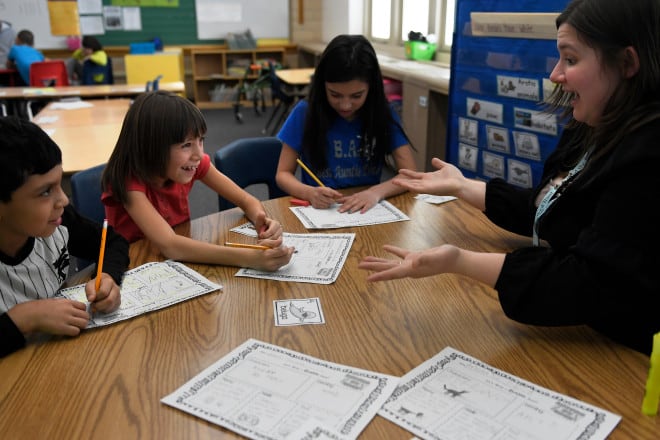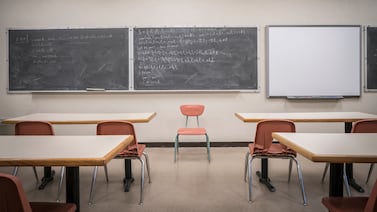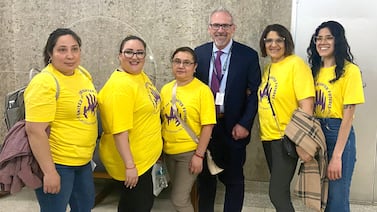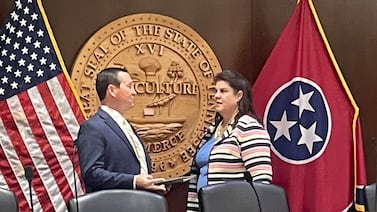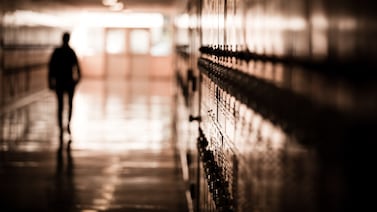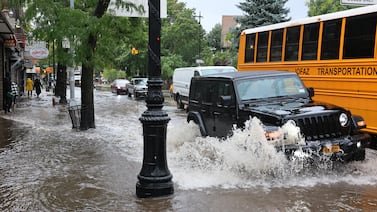Jasmine White doesn’t want her third-grade daughter to have to switch schools.
She chose the school, Palmer Elementary, for several reasons. For one, it’s close to both her house and her older daughter’s middle school so the sisters can walk home together. And it’s more diverse than other schools in the neighborhood. White, who is Black, didn’t want her younger daughter to be bullied for her skin color as her older daughter was.
“At Palmer,” White said, “they embrace my baby.”
Palmer is one of 10 Denver schools that Superintendent Alex Marrero recommended Tuesday be closed or consolidated with other schools. The 10 schools include eight elementary schools, one K-8 school, and one middle school. The school board is set to vote on the closures as a package deal — all 10 closures or no closures at all — on Nov. 17.
Enrollment in Denver Public Schools is declining, and Marrero said schools with fewer students can’t offer robust programming. His closure recommendations, he said, are based on criteria developed by a committee of parents, teachers, and community members that suggested closing schools with fewer than 215 students in kindergarten or above.
In an interview Wednesday, Marrero said 14 schools actually met the criteria. But the other four were spared because of geography, he said: There wasn’t another elementary school within 2 miles that could receive the small school’s students.
“That’s how we settled to the 10,” he said. “And I believe that they are the right 10.”
Enrollment at the 10 schools this year ranges from a low of 93 students at Denver Discovery School to a high of 212 students at Eagleton Elementary, not counting preschool, Marrero said.
Nine of the 10 schools serve a student population that is predominantly Black and Hispanic, and most students qualify for subsidized school meals, an indicator of poverty.
That the closures would hit low-income communities of color hardest — as past Denver school closures have — flies in the face of the district’s stated value of equity, parents said.
“The district talks a very strong equity game but doesn’t necessarily live that out,” said Manuel Aragon, whose youngest child is in fourth grade at Colfax Elementary, one of the 10 schools.
He said the timing of the news, in the midst of a pandemic, is particularly difficult.
“It feels disheartening to get this news when these communities of color are fatigued,” Aragon said. “So many were impacted financially and emotionally and have lost family members to COVID and gone through such extreme circumstances — and here’s one more.”
Marrero said this list of 10 schools is more fair than a previous list of 19 schools that he scrapped a year ago, which he said was “glaring” in the way it predominantly impacted students of color. This list, he said, includes a school — Palmer — where a majority of students are white. Last year, 56% of students at Palmer were white, 17% were Hispanic, and 16% were Black. Districtwide, 25% of students are white, 52% are Hispanic, and 14% are Black.
Marrero also described the list of 10 schools as “community-driven” because it’s based on criteria developed by a community committee. But parent Shantelle Mulliniks disagrees. She said the district’s attempts at gathering feedback have been inauthentic.
“It feels like the decisions have been made long, long ago and they’re just stringing us along in the process,” said Mulliniks, who has two children at Colfax Elementary.
The timeline for the closure decisions is short. The school board is set to vote in about three weeks. Between now and then, Marrero said there will be “intimate and intense community engagement” that will consist of meetings at each of the 10 schools, plus a single public comment session on Nov. 14, three days before the school board is set to vote.
“If you go deep, there’s no need to go long,” Marrero said of the short timeline for feedback.
He added that he understands “the argument that this can be a little bit tight,” but that the potential for closures has been on the table since the school board passed a resolution in June 2021 directing the district to come up with options for consolidating schools.
That resolution also directs the district to present the board with multiple options, and to list the pros and cons for each. Some board members have said they oppose school closures, and at least one, Vice President Auon’tai Anderson, said he plans to vote against the closures.
“At this time I will be voting NO on closing all 10 schools,” he tweeted.
Parents said they are holding out hope that the board will reject the closure recommendations as too disruptive for students, parents, teachers, and communities. Mulliniks said she hopes the board will see that closing a school like Colfax Elementary, which serves students experiencing homelessness who live in nearby family shelters, is wrong.
“I still have a little bit of hope that the board will say there’s no way this is good for kids,” she said.
Melanie Asmar is a senior reporter for Chalkbeat Colorado, covering Denver Public Schools. Contact Melanie at masmar@chalkbeat.org.


